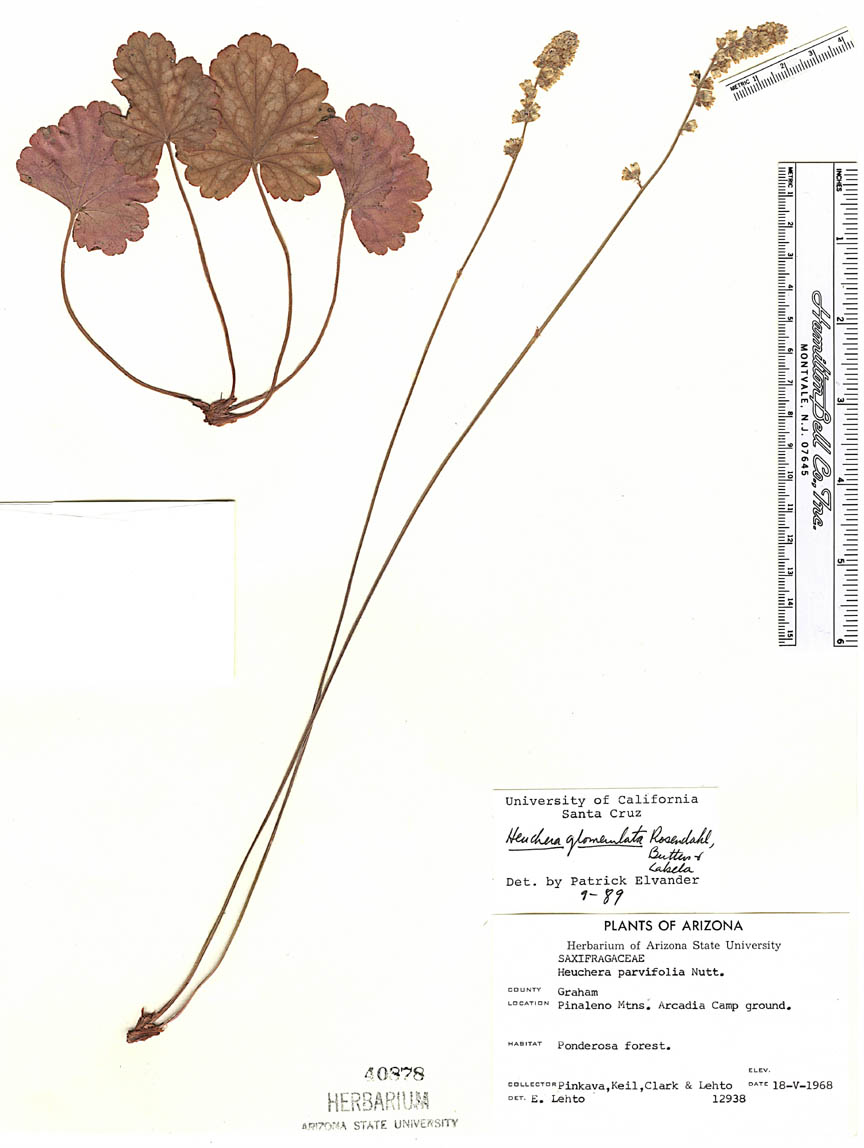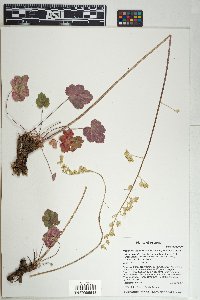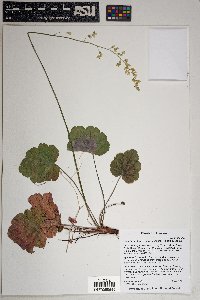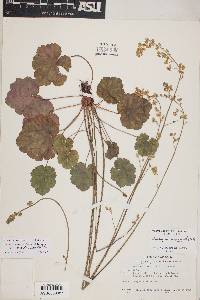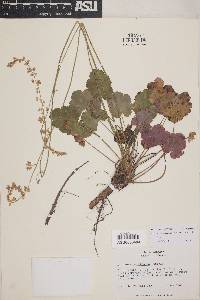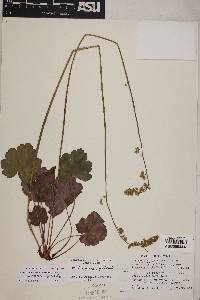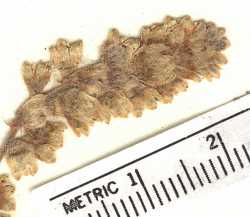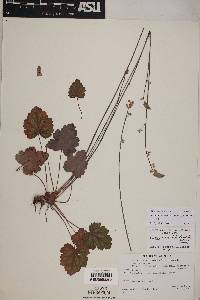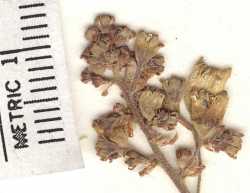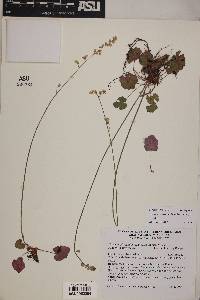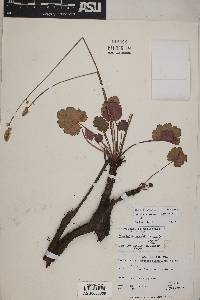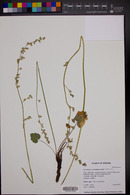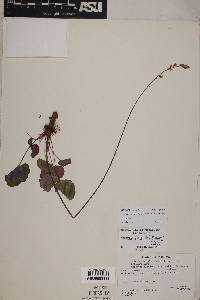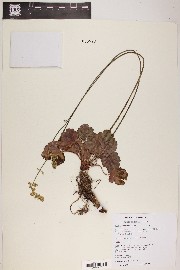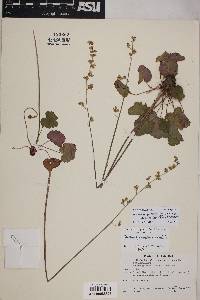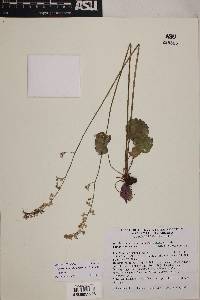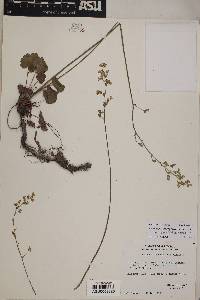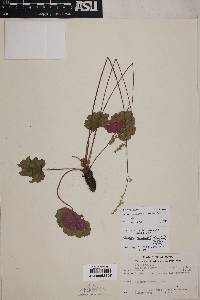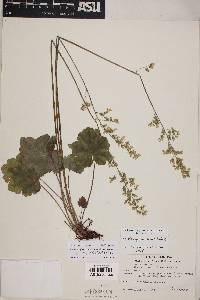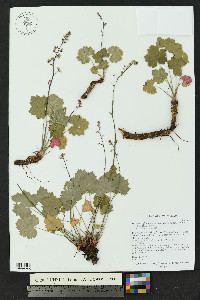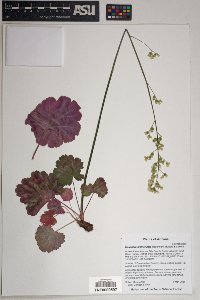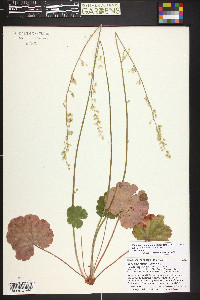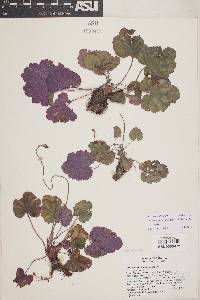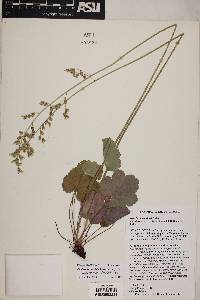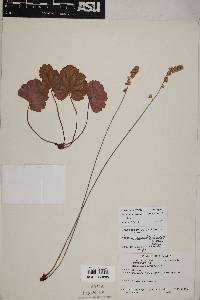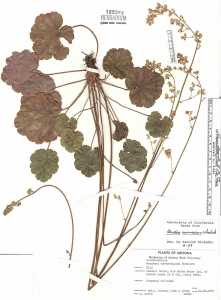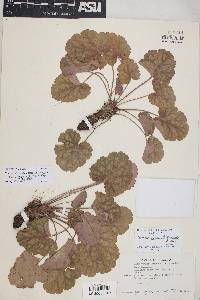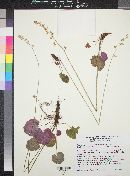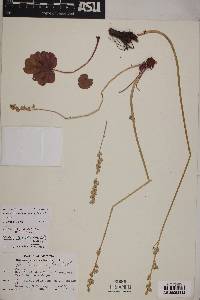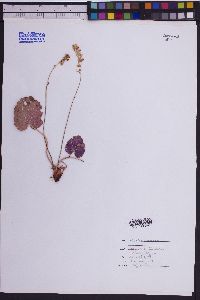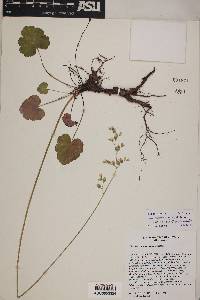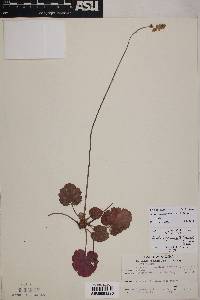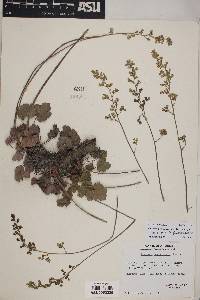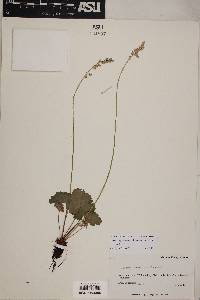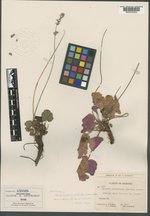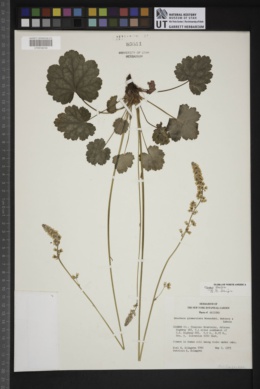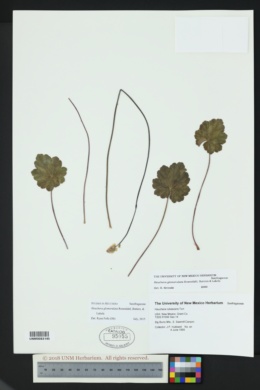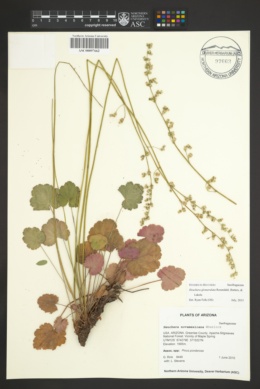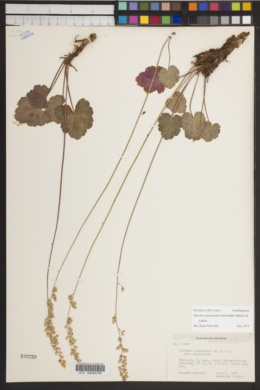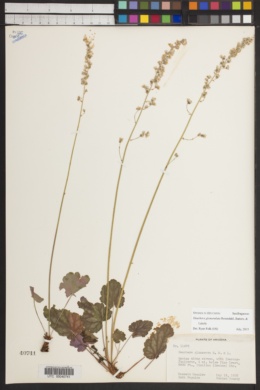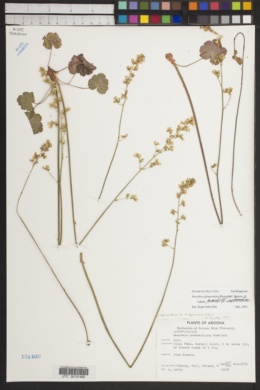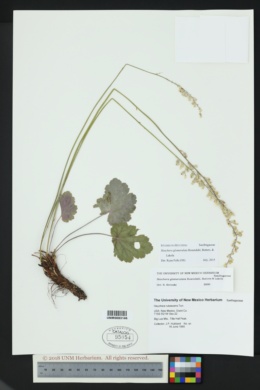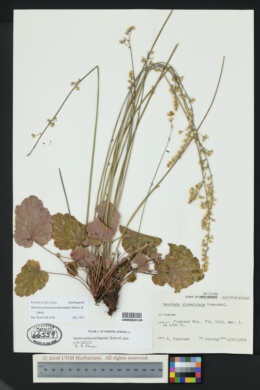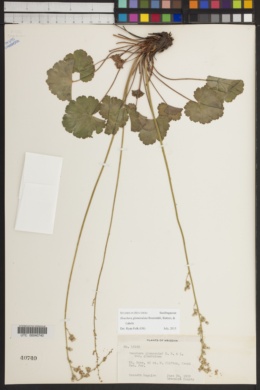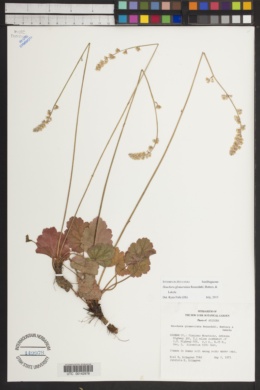Heuchera glomerulata
|
|
|
|
Family: Saxifragaceae
Chiricahua Mountain Alumroot
|
Herbs acaulescent; caudex branched. Flowering stems 25-40 cm, long stipitate-glandular. Leaves: petiole short stipitate-glandular; blade (purple abaxially, variegated adaxially), ovate to orbiculate, shallowly 5-lobed, 2.5-9 cm, base cordate, lobes rounded, margins dentate, apex obtuse, surfaces short stipitate-glandular, long stipitate-glandular on veins abaxially, short stipitate-glandular and sparsely long stipitate-glandular adaxially. Inflorescences dense, (interrupted). Flowers: hypanthium radially symmetric, free 0.8-1.2 mm, yellowish green, campanulate, 3.5-5 mm, densely long stipitate-glandular mixed with short stipitate-glandular; sepals erect or incurved at tip, green-tipped, equal, 1.5-2 mm, apex acute; petals erect, white, narrowly oblanceolate, (clawed), unlobed, 1.5-1.8 mm, margins entire; stamens included 0.5 mm; (filaments strongly incurved, slender, shorter than and almost concealed by anthers); styles included 1 mm, to 0.5 mm, 0.1+ mm diam. Capsules ovoid, 4-5 mm, beaks divergent, not papillose. Seeds black, fusiform, 0.5 mm. 2n = 14. Flowering May. Shaded, rocky slopes; 1300-2000 m; Ariz., N.Mex. Heuchera glomerulata occurs in the Chiricahua and Pinaleno mountains of southeastern Arizona and in New Mexico.
Plant: perennial herb Leaves: blades 1.5-5 cm long, broadly ovate-cordate, shallowly 7-10 lobed, the lobes crenate; petioles glabrous or with some small hairs, 2-9 cm long INFLORESCENCE: condensed racemes, slightly paniculate below, 30-60 cm tall Flowers: 3-5 mm long, mostly pale yellow-cream, densely hirsute to pilose; portion of hypanthium fused to ovary 1-1.5 mm long, ovoid, about equal to free part; sepals equal, oblong, occasionally pink-tipped, erect; petals 1-2 mm long, shorter than sepals, obovate to oblanceolate, occasionally pink tinged; stamens shorter than sepals, the anthers usually purple, sometimes yellow; mature styles shorter than sepals Fruit: FRUITS 2-valved; SEEDS smooth to ridged Misc: -Rocky woodlands and near streams; 1200-2750 m (4000-9000 ft); May-Aug REFERENCES: Elvander, Patrick. 1992. Saxifragaceae. Ariz.-Nev. Acad. Sci. 26(1)2. FNA 2009, JANAS 26(1), Kearney and Peebles 1969, McDougal 1973 Duration: Perennial Nativity: Native Lifeform: Forb/Herb General: Herbaceous, acaulescent perennials, stems scapose, to 40 cm, branching from the woody, scaly caudex, herbage stipitate-glandular, plants arising from scaly rhizomes. Leaves: Mostly basal, orbicular to broadly ovate, 2.5-9 cm, shallowly 5-10 lobed, margins dentate, bases cordate, the blades palmately veined and with long, finely puberulent petioles, purple below, dusty green and somewhat variegated above. Flowers: Greenish to yellowish, campanulate, stipitate-glandular, 3-5 mm long with 5 whitish petals, these small, entire, clawed, shorter than the sepals and not much wider than the claw, copiously white-hirsute and puberulent, sepals oblong or ovate, 1.5-2 mm, erect to incurved at the tip, stamens 5, included, shorter than and opposite the sepal lobes, styles 2 with a well-developed turbinate or campanulate hypanthium, flowers borne in dense, interrupted, elongate and contracted panicles, the lower branches usually less than 2 cm long. Fruits: Ovoid capsule 4-5 mm, with 2 divergent beaks. Seeds black, fusiform, to 0.5 mm, numerous. Ecology: Found on shaded, rocky slopes in mountainous areas, from 4,000-9,000 ft (1219- 2743 m); flowering May-August. Distribution: Arizona, New Mexico. Ethnobotany: There is no specific use recorded for the species, but the genus has many uses. Etymology: Heuchera is named after Johann Heinrich von Heucher (1677-1747), professor of medicine and botanist at Wittenberg, Germany, while glomerulata means clustered. Synonyms: None Editor: LCrumbacher 2011 |

